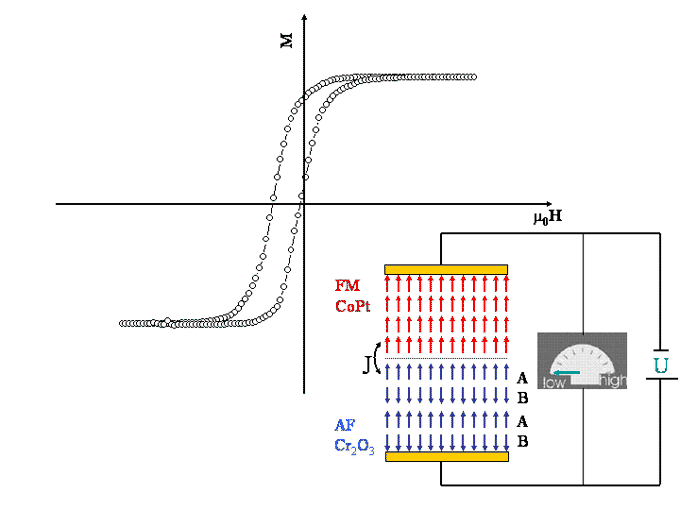Department of Physics and Astronomy: Publications and Other Research

Christian Binek Publications
Document Type
Article
Date of this Version
2010
Abstract
Piezoelectrically controlled strain is used for electric tuning of exchange-bias fields. A generic exchange-bias Co/CoO bilayer is deposited on the surface of a ferroelectric and thus piezoelectric BaTiO3 substrate which allows to apply electrically and thermally tunable stress in the adjacent ferromagnetic Co thin film. The stress-induced strain alters foremost the magnetic anisotropy of the Co film and by that the magnetization orientation at the Co/CoO interface modifying the exchange-bias field. This results in a pronounced electrically induced weakening of the exchange bias but also includes the possibility of tuning the exchange-bias field through a subtle sign change from regular negative to positive values. The electrically controlled crossover from negative to positive exchange bias is consistently observed at various temperatures in the rhombohedral phase of BaTiO3. This complex electric field dependence of the exchange-bias field is the result of the long-range nature of strain and interpreted through competition between ferromagnetic and antiferromagnetic exchange at the Co/CoO interface. Our data suggest competition between regular negative and positive exchange bias. Weakening of negative exchange bias originates from noncollinear alignment of the Co and CoO interface magnetizations. Positive exchange bias is activated when stress induces antiferromagnetic exchange through atomic displacements changing the exchange paths at the Co/CoO interface.


Comments
Published in PHYSICAL REVIEW B 82, 134419 (2010); DOI: 10.1103/PhysRevB.82.134419 Copyright © 2010 The American Physical Society. Used by permission.